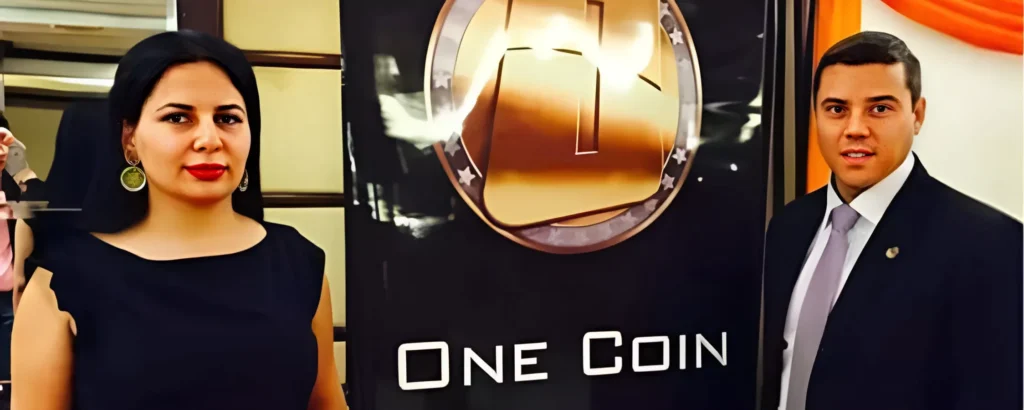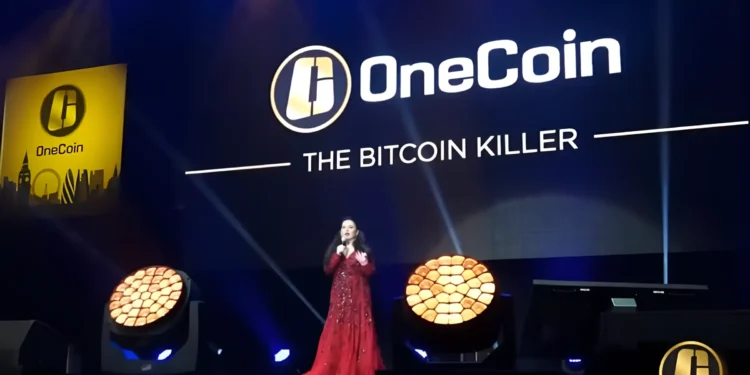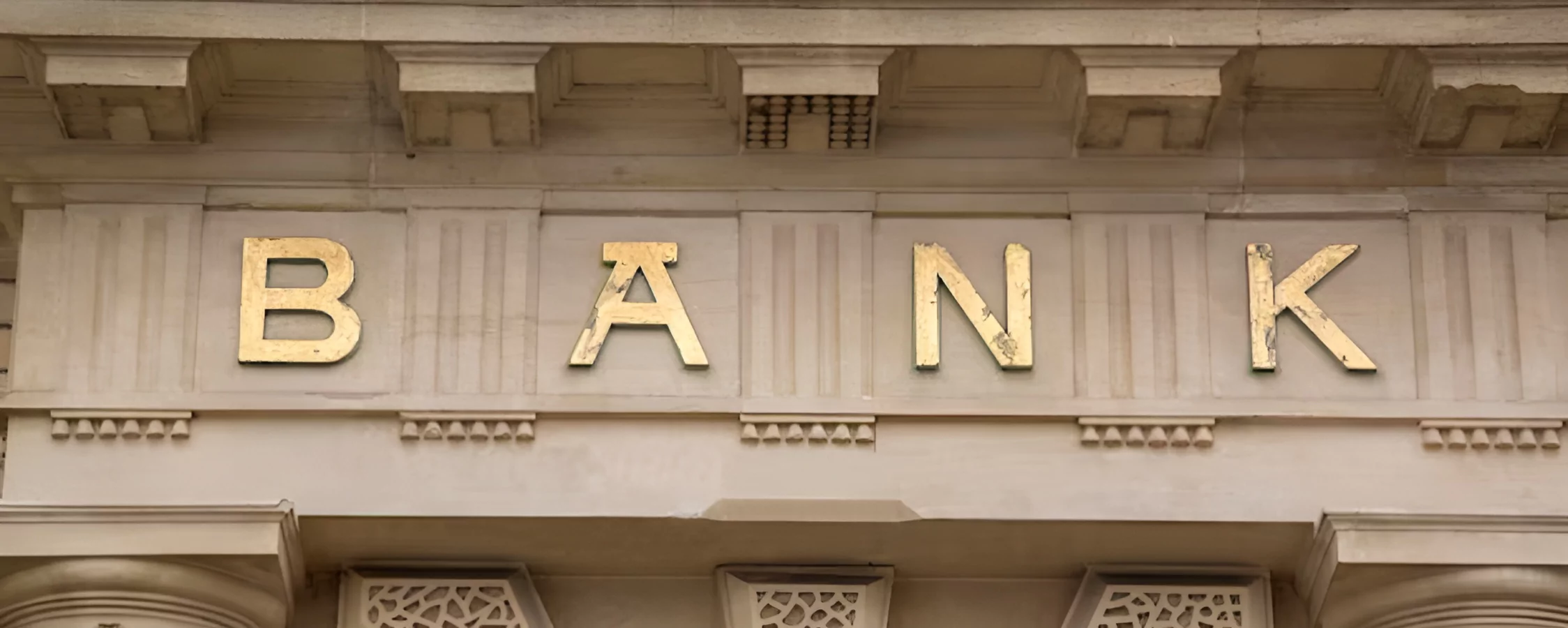When it comes to crypto we all have heard of a scam that used crypto to steal money. It’s safe to say not all crypto is a scam but there is a few cases in which frauds have affected thousands of people. In this article, we will be talking about one of the biggest crypto scams in history, OneCoin.
What Was OneCoin And How Did It Operate?
OneCoin was an alleged cryptocurrency project launched in 2014 by Ruja Ignatova and Sebastian Greenwood. However, it lacked the fundamental attributes of a real cryptocurrency – it did not use blockchain technology and operated more like a traditional multi-level marketing (MLM) scheme. Users could purchase educational packages granting them access to mine and trade OneCoins on the company’s exchange.
The founders aggressively recruited new investors through seminars, promising astronomical returns. Participants were told OneCoin was still private and not publicly traded, but once it hit exchanges it would usurp Bitcoin as the leading cryptocurrency. Ignatova touted fake partnerships with companies like Microsoft and claimed OneCoin had billions in revenue despite no evidence of real mining operations. She even claimed OneCoin was audited annually by a Big Four accounting firm, when in fact no such audit ever took place.
Was OneCoin Truly The Biggest Crypto Scam In History?

By most metrics, OneCoin represented the biggest cryptocurrency scam to date. Authorities estimate over $4 billion was stolen from victims globally through the scheme before it collapsed. To put this in perspective, the second largest crypto-related fraud Mt. Gox only saw $450 million vanish. OneCoin recruitment spanned practically every country, with leaders targeting nations where cryptocurrency regulation was lacking.
It’s believed over 3 million users worldwide purchased educational packages, the majority losing all funds invested. OneCoin has since been declared a fraudulent scheme by governments of dozens of countries. Ignatova has been indicted by American prosecutors on wire fraud and money laundering charges carrying a maximum prison term of 90 years. She remains at large with an active Interpol red notice seeking her arrest. OneCoin’s immense scale and brazen lies cement its position as the biggest crypto scam in history.
How Did OneCoin Manage To Recruit So Many Believers?
OneCoin’s rapid worldwide growth can be attributed to highly effective multi-level marketing techniques exploiting human behavioral biases. Most importantly, it promised participants fast wealth without work by simply referring others to the “opportunity”. Get-rich-quick schemes will always entice some looking for easy money.
OneCoin events resembled motivational mega-conferences with glamorous guest speakers hyping future valuations. Confirmation bias took over as attendees reinforced each other’s preexisting beliefs that OneCoin must be legitimized. Social proof was created through lavish displays of wealth by top recruits, tricking naïve newcomers. The whole structure masked the absence of an actual product behind the recruitment of more investors.
Simply put, basic human greed and herd mentality allowed OneCoin’s deception to thrive on a massive scale for years despite obvious implausibility. Those promoting it either turned a blind eye or partook willingly in the fraud themselves to profit at others’ expense, with detrimental societal consequences. OneCoin serves as an important reminder of the need for consumer cryptocurrency education and regulation to curb similar scams going forward.
Why Did Authorities Struggle To Shut Down OneCoin Earlier?
As the OneCoin Ponzi scheme grew exponentially across the globe, one might wonder why law enforcement did not act more swiftly to stop it. Several factors hindered early intervention by authorities and allowed the scam to balloon into the biggest crypto fraud ever.
For one, cryptocurrency laws were still maturing in most nations during 2014-2016 as blockchain technology emerged. OneCoin leaders exploited jurisdictional gray areas by registering companies in offshore havens with loose oversight. This prevented information sharing between affected countries.
Secondly, complex multi-level marketing structures and international money flows challenge regulators to unpick. It took extensive forensic accounting work to trace laundering. Ignatova also went to ground in late 2017, impairing prosecution.
Meanwhile, cryptocurrency hype blinded many to potential pitfalls at the time. OneCoin polished an appearance of legitimacy confusing the general public and delaying suspicion. By the time red flags accumulated, billions had already flowed into the leaders’ pockets through a sophisticated worldwide fraud. Stricter global coordination is now needed to mitigate new crypto scams going forward.
What Happened To OneCoin And Its Founders After The Scheme Collapsed?

As the truth behind OneCoin’s façade became impossible to hide by late 2016, the dam began to break. Multiple national authorities issued warnings about its fraudulent nature. The company stopped paying withdrawals and went silent. OneCoin offices globally were promptly abandoned or soon after raided by police.
By this point, founders Ignatova and Greenwood had already amassed huge fortunes through their multi-year scam estimated at over $4 billion total. Ignatova vanished in late 2017 while under investigation in Bulgaria and America, disappearing with billions in criminal proceeds. She is now the subject of an Interpol red notice and faces charges carrying a potential 90-year sentence if ever captured.
Greenwood was arrested in 2018 in London and extradited to America to face wire fraud conspiracy charges. He pleaded guilty and is cooperating with authorities hunting Ignatova as the alleged mastermind. Many lower-level OneCoin recruiters also faced legal troubles, with some receiving jail sentences. The case remains active with ongoing efforts to seize OneCoin assets and return funds to victims where possible.
Conclusion | The Biggest Crypto Scam
OneCoin grew to become the biggest crypto scam in history by deceiving millions worldwide and funneling over $4 billion to its founders through a sophisticated multi-level marketing fraud. Its collapse left lives financially ruined. While key leaders still evade justice, the case serves as an important lesson on both human vulnerabilities exploitable by scammers and the need for coordinated global regulation of cryptocurrencies.













